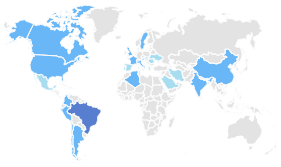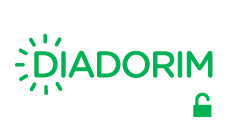Des Mémoires Turkestans: la Terraformage du Bassin de la Mer d'Aral et la Guerre Silencieuse pour l'Eau (Turkestan Memoirs: The Terraforming of the Aral Sea Basin and the Silent War for Water)
Resumo
Cet article traite du concept de terraformage appliqué à la Terre elle-même, en particulier au bassin de la mer d'Aral. Les approches historiques et géologiques, ainsi que les notes de voyage personnelles, forment le scénario général sur lequel les analyses et les propositions sont présentées. Les considérations environnementales et géopolitiques sur la situation des ressources en eau douce en Asie centrale sont basées sur les politiques locales actuelles. Les lignes directrices fondamentales de la terraformation sous géoingénierie sont prescrites.
Mots-clés: Mer d'Aral, terraformation, environnement, eau douce.
======================================================================================================This article discusses the concept of terraforming applied to Earth itself, in particular to the Aral Sea basin. Historical and geological approaches, as well as personal travel notes, form the general storyline on which analyzes and proposals are presented. Environmental and geopolitical considerations on the situation of the freshwater resources in Central Asia are made based on the current local policies. Fundamental guidelines of terraforming under geoengineering are prescribed.
Key words: Aral Sea, terraforming, environment, freshwater.
Texto completo:
Des Mémoires TurkestansReferências
Bos, M. (Ed.) 1995. “The Inter-Relationship between Irrigation, Drainage and the Environment in the Aral Sea Basin.” In Proceedings of the NATO Advanced Research Workshop on Drainage and Development in Arid Zones, NATO ASI Series 2: Environment, Vol. 22.
Badescu, V., and Cathcart, R. 2011. “Aral Sea Partial Restoration. I. A Caspian Water Importation Macroproject.” Int. J. Environment and Waste
Management 7 (1; 2).
Chub, V. 2000. Climate Change and its Influence on Natural Resource Potential of the Republic of Uzbekistan. Glavgidromet, Tashkent, 252p.
Clarke, R., and King, J. 2005. O Atlas da Água. Publifolha, São Paulo.
Glantz, M. 2004. Creeping Environmental Problems and Sustainable Development in the Aral Sea Basin. Cambridge University Press, Cape Town.
Haas, C., The Aral Sea. Ph.D. Thesis, EPFL, 74p (2014).
Issanova, G., Abuduwaili, J., Galayeva, O., Semenov, O., Bazarbayeva, T. 2015. “Aeolian Transportation of Sand and Dust in the Aral Sea Region.” Int. J. Environ. Sci. Technol 12, 3213–3224.
Izhitskiy, A., Zavialov, P., Sapozhnikov, P., Kirillin, G., Grossart, H., Kalinina, O., Zalota, A., Goncharenko, I., and Kurbaniyazov, A. 2016. “Present State of the Aral Sea: Diverging Physical and Biological Characteristics of the Residual Basins.” Scientific Reports 6:23906.
Kadukin, A., and Klinge, R. 1991. “The Water Balance of the Caspian Sea and Aral Sea.” In Hydrology of Natural and Manmade Lakes, Proceeding of the Vienna Symposium, IAHS Publ. no. 206.
Kostianoy, A., Kosarev, A. (Eds.) 2010. The Aral Sea Environment. Springer-Verlag, Berlin, 335p.
Krivonogov, S., Kuzmin, Y., Burr, G. 2010. “Environmental Changes in the Aral Sea Region (Central Asia): Initial Results of a Radiocarbon-Based Study.” Nuclear Instruments and Methods in Physics Research B 268, 1080–1083.
DOI: http://dx.doi.org/10.17648/calibre.v2i1.172
Apontamentos
- Não há apontamentos.
Direitos autorais 2017 CALIBRE - Revista Brasiliense de Engenharia e Física Aplicada
Indexadores, Diretórios, Bases de Dados e Registros (Abstracted and Indexed in):

CALIBRE - Revista Brasiliense de Engenharia e Física Aplicada
ISSN Eletrônico: 2526-4192































